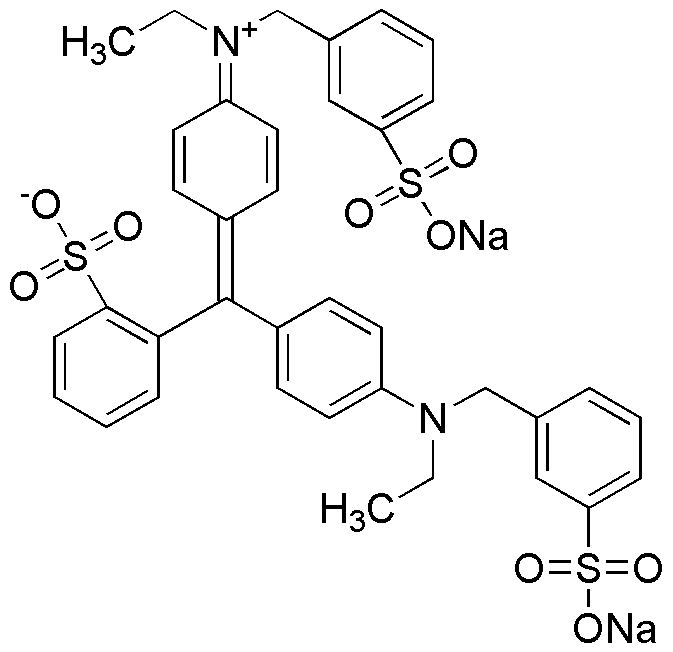Erioglaucine is widely utilized in research focused on:
- Food Industry: Commonly used as a food coloring agent, providing a vibrant blue hue to various products, enhancing visual appeal and consumer acceptance.
- Pharmaceuticals: Acts as a dye in medications, helping to identify and differentiate between various drug formulations, which is crucial for patient safety.
- Biological Research: Employed in staining techniques for microscopy, allowing researchers to visualize cellular structures and processes, aiding in the understanding of biological functions.
- Cosmetics: Utilized in personal care products, contributing to color formulation while being safe for skin application, making products more attractive to consumers.
- Textile Industry: Serves as a dye for fabrics, providing long-lasting color that resists fading, thus enhancing the durability and aesthetic quality of textile products.
General Information
Properties
Safety and Regulations
Applications
Erioglaucine is widely utilized in research focused on:
- Food Industry: Commonly used as a food coloring agent, providing a vibrant blue hue to various products, enhancing visual appeal and consumer acceptance.
- Pharmaceuticals: Acts as a dye in medications, helping to identify and differentiate between various drug formulations, which is crucial for patient safety.
- Biological Research: Employed in staining techniques for microscopy, allowing researchers to visualize cellular structures and processes, aiding in the understanding of biological functions.
- Cosmetics: Utilized in personal care products, contributing to color formulation while being safe for skin application, making products more attractive to consumers.
- Textile Industry: Serves as a dye for fabrics, providing long-lasting color that resists fading, thus enhancing the durability and aesthetic quality of textile products.
Documents
Safety Data Sheets (SDS)
The SDS provides comprehensive safety information on handling, storage, and disposal of the product.
Product Specification (PS)
The PS provides a comprehensive breakdown of the product’s properties, including chemical composition, physical state, purity, and storage requirements. It also details acceptable quality ranges and the product's intended applications.
Certificates of Analysis (COA)
Search for Certificates of Analysis (COA) by entering the products Lot Number. Lot and Batch Numbers can be found on a product’s label following the words ‘Lot’ or ‘Batch’.
*Catalog Number
*Lot Number
Certificates Of Origin (COO)
This COO confirms the country where the product was manufactured, and also details the materials and components used in it and whether it is derived from natural, synthetic, or other specific sources. This certificate may be required for customs, trade, and regulatory compliance.
*Catalog Number
*Lot Number
Safety Data Sheets (SDS)
The SDS provides comprehensive safety information on handling, storage, and disposal of the product.
DownloadProduct Specification (PS)
The PS provides a comprehensive breakdown of the product’s properties, including chemical composition, physical state, purity, and storage requirements. It also details acceptable quality ranges and the product's intended applications.
DownloadCertificates of Analysis (COA)
Search for Certificates of Analysis (COA) by entering the products Lot Number. Lot and Batch Numbers can be found on a product’s label following the words ‘Lot’ or ‘Batch’.
*Catalog Number
*Lot Number
Certificates Of Origin (COO)
This COO confirms the country where the product was manufactured, and also details the materials and components used in it and whether it is derived from natural, synthetic, or other specific sources. This certificate may be required for customs, trade, and regulatory compliance.


